How Well Does ProFlex Paver Edging Work?
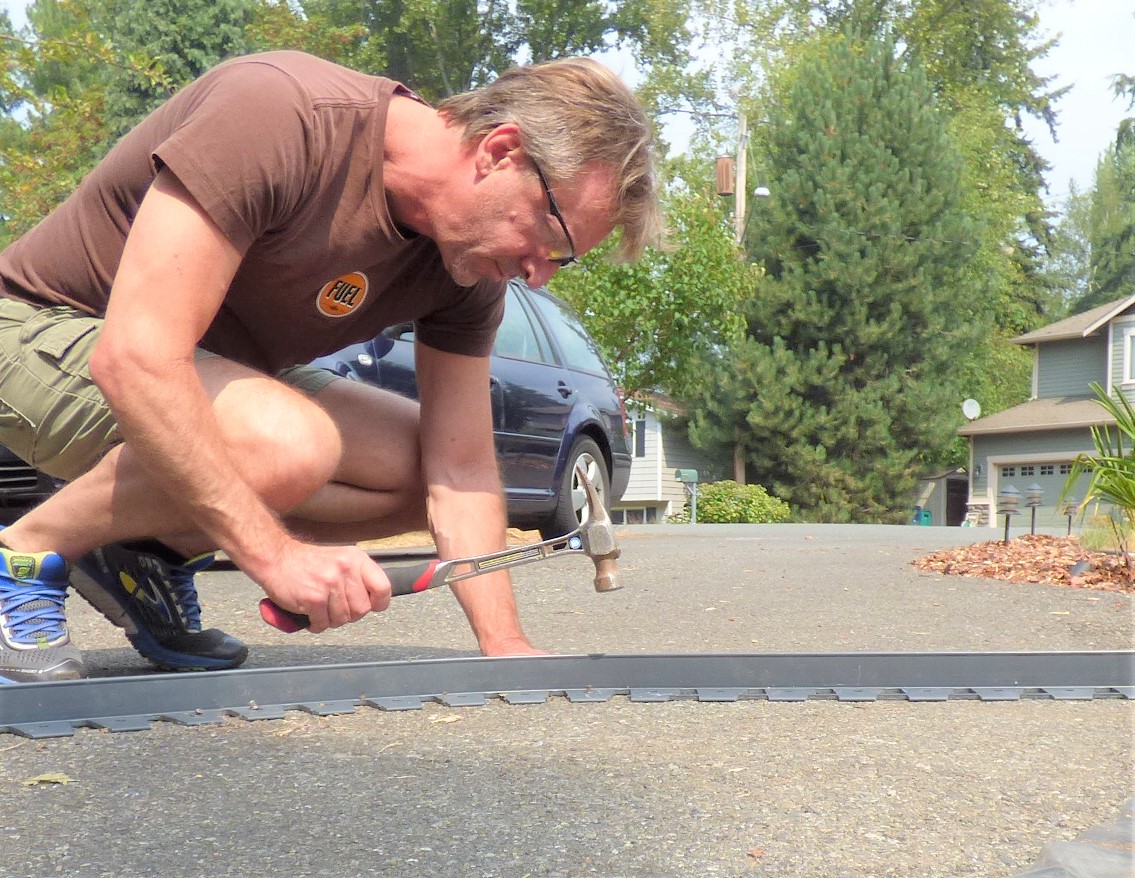
For a long time I’ve been contemplating installing edging on my asphalt driveway do that I could throw some sand down and make a small beach for my garden pond. I tossed around the idea of using pressure-treated 2x2s, except I wanted them to curve. I put the idea away until I saw ProFlex Paver Edging advertised at Home Depot.
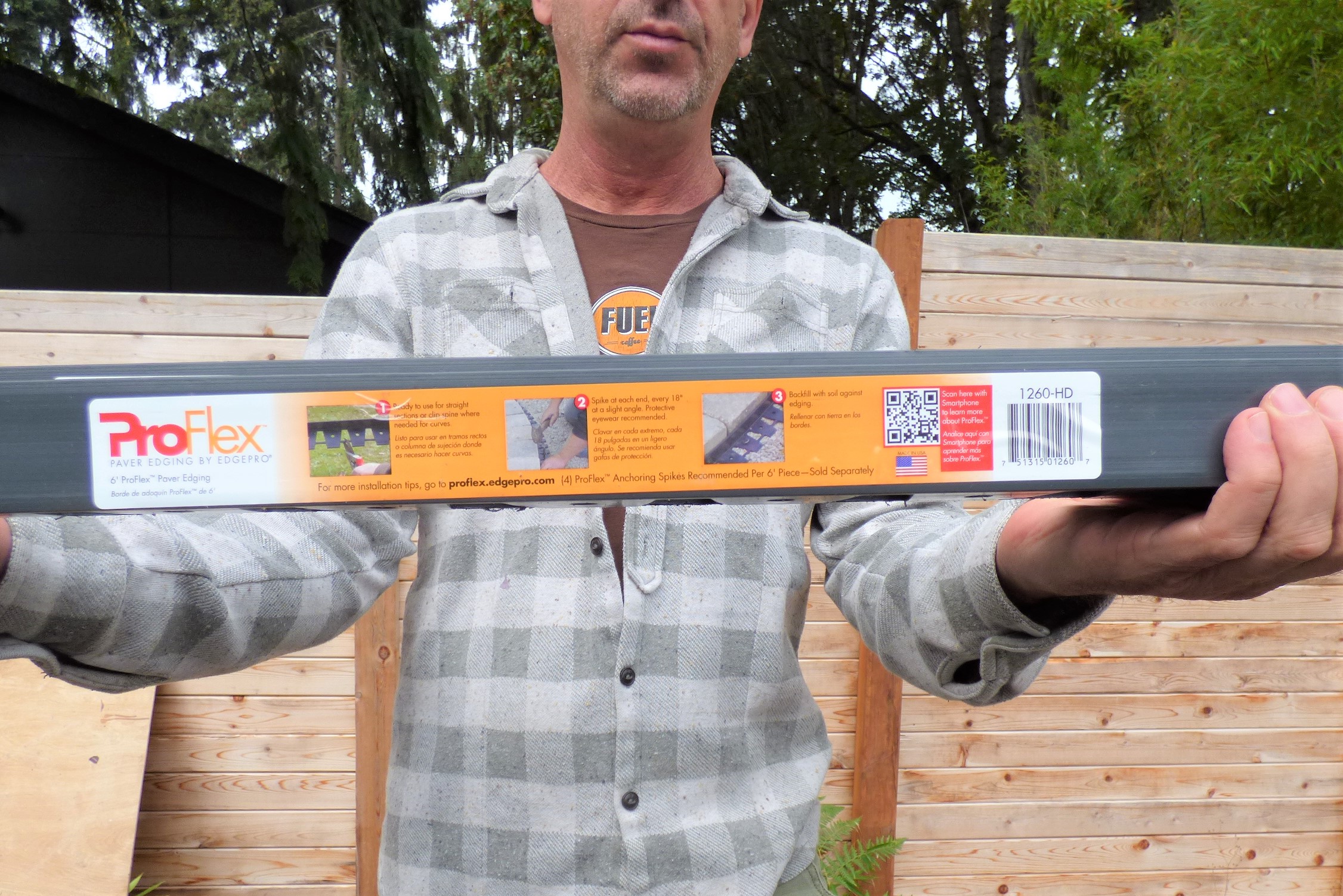
What Is ProFlex?
ProFlex Paver Edging by EdgePro is designed to act as a supporting perimeter for pavers. ProFlex is a 6 foot long L-shaped strip of hard PVC plastic, segmented so that you can cut away the strips that connect the segments and curve it. Or you can leave the segments in place for a straight strip. EdgePro separately sells plastic anchoring spikes for driving into the ground.
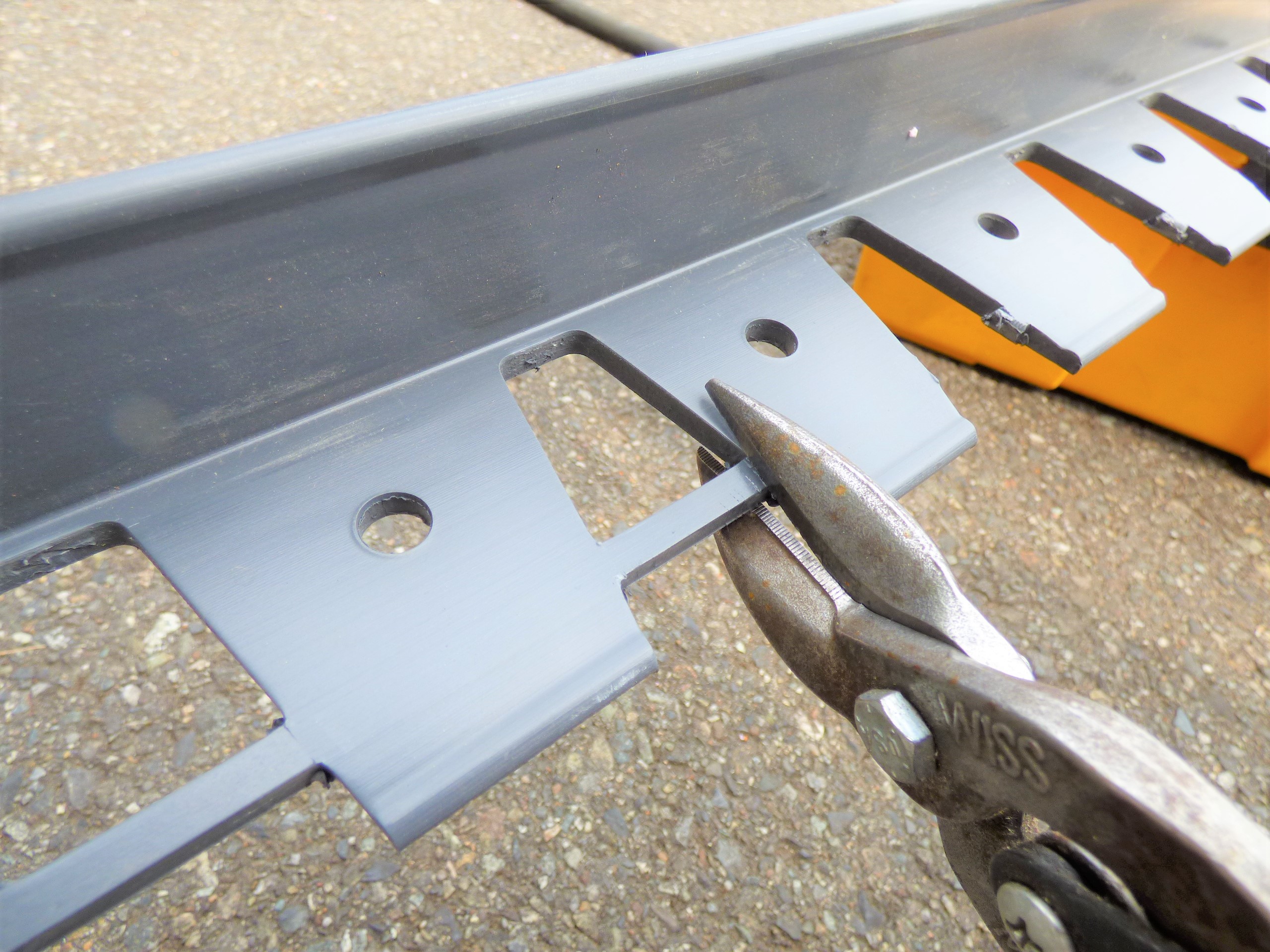
Why Do You Need Paver Edging?
Pavers for walkways and patios, despite their weight, will move around. They will separate and begin to migrate outward. Worse, the seams between the pavers will widen, developing weeds and collecting dirt and other junk.
Edging holds the pavers in place and gives the perimeter a nice, finished look.
How Did I Use It?
I used ProFlex in two unconventional ways: installing it backwards and on top of asphalt paving.
First, if you look at ProFlex from the side, it’s obvious that the section of the product that contacts the ground should be outside of the pavers. Structurally, ProFlex gains the most strength when installed like this. Then, the protruding part of ProFlex will get covered up by turf, soil, sand, or rock.
Second, I installed ProFlex on an asphalt driveway. I used masonry nails and washers, hammering the nails directly into the asphalt without pilot holes.
Because the nail heads are smaller than the existing holes, I had to use washers:
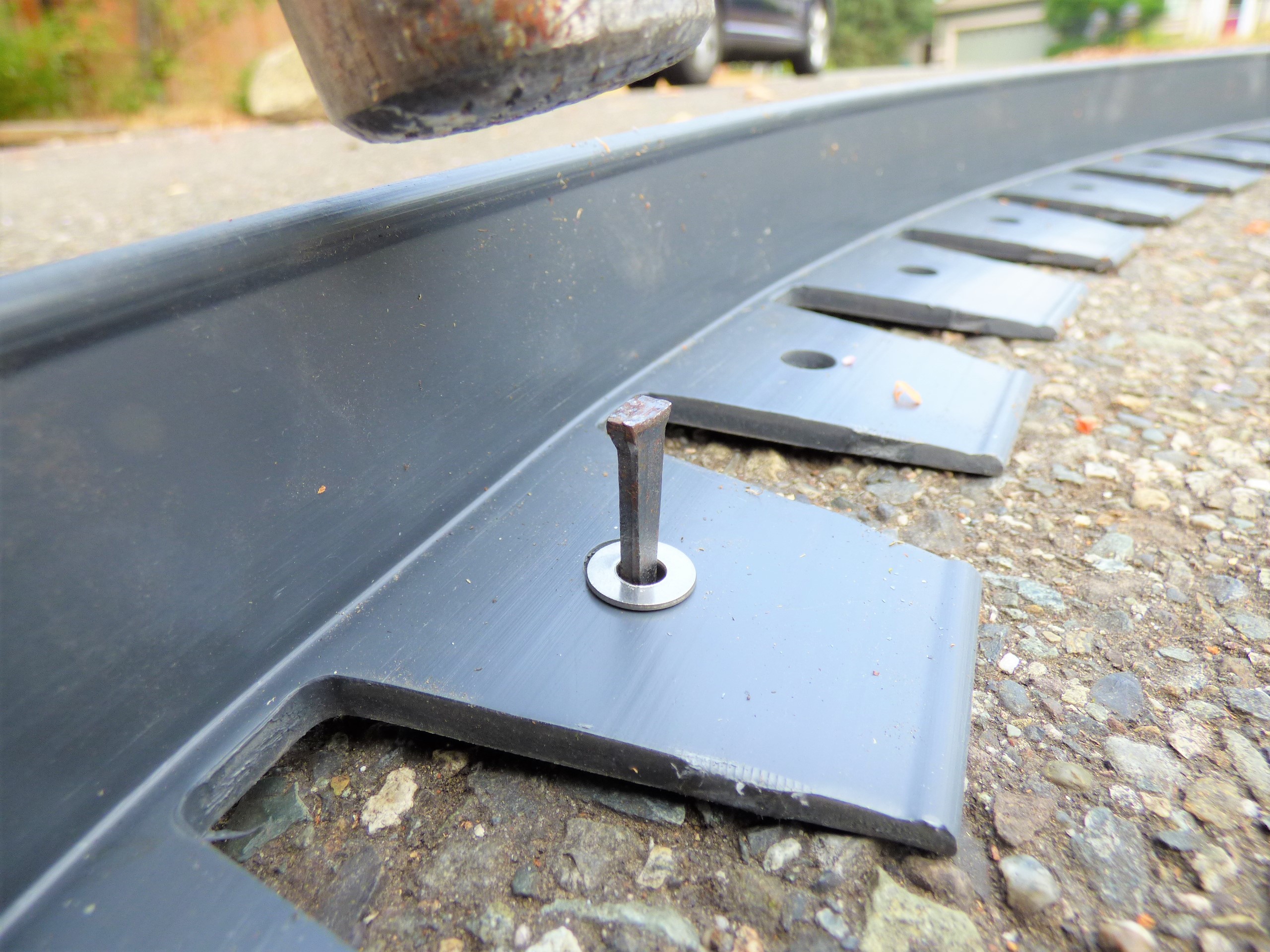
Eventually it dawned on me that I could drill my own holes. Not only did this give me a tighter, more secure fit, with the nail hole being farther away from the lip, I could hammer without fear of hitting and breaking the lip.
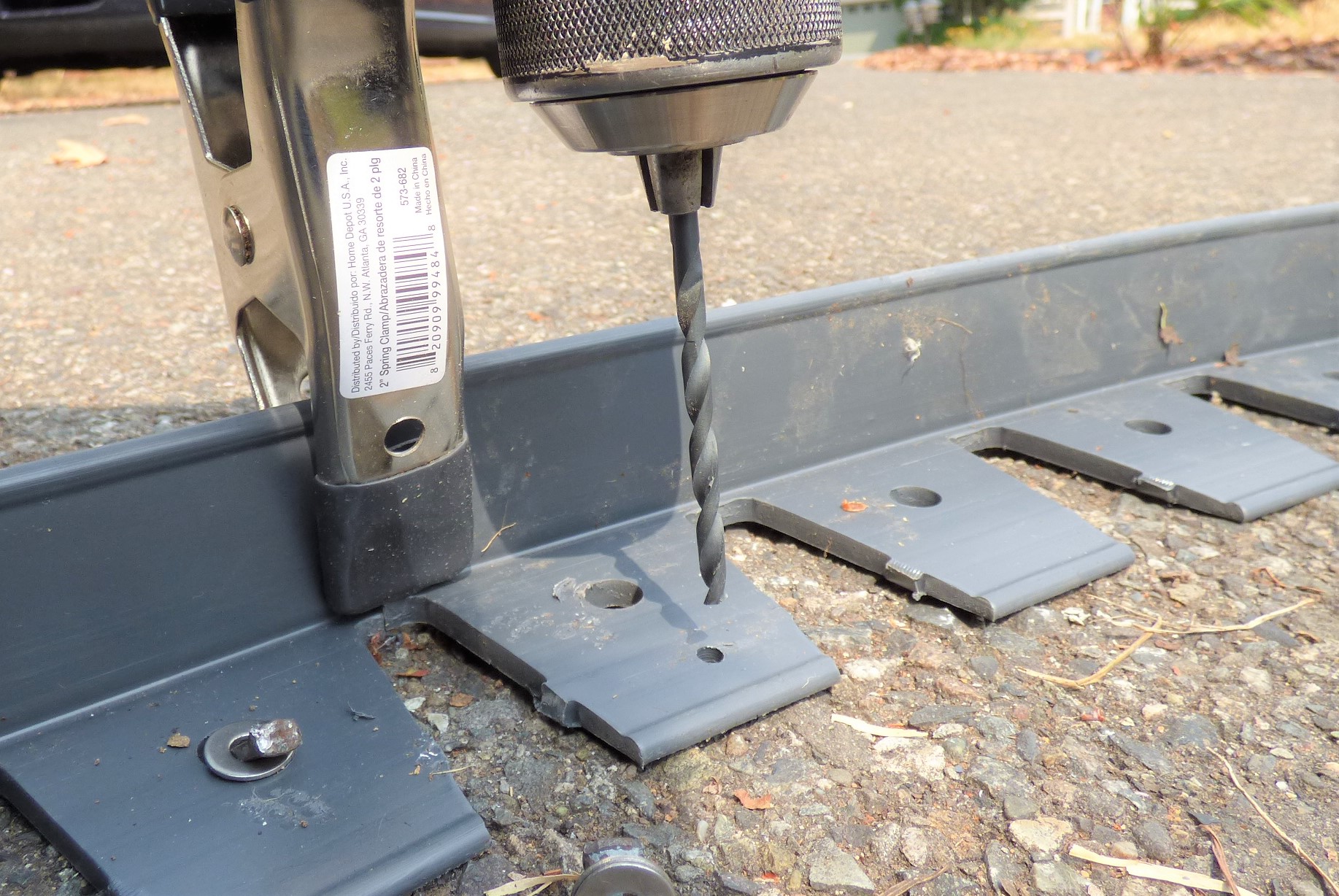
Should You Buy ProFlex Paver Edging?
From my short, three-strip purchase of ProFlex, I’m pretty enthusiastic about it. Cutting out the pieces that connect segments was tedious work with tin snips. I would not want to do this on a larger scale.
Price is the main limiting factor. I paid $8.97 per strip, which translates to about $1.50 per foot. For my small application, this was not even close to being a deal-breaker. The problem is that you essentially cannot use ProFlex Edging without their plastic spikes, which are close to $1 per spike. If you figure $4 per 6-foot strip of ProFlex, the price now jumps to about $13 just to lay a single 6-foot strip.